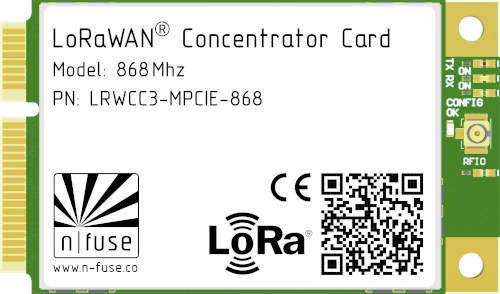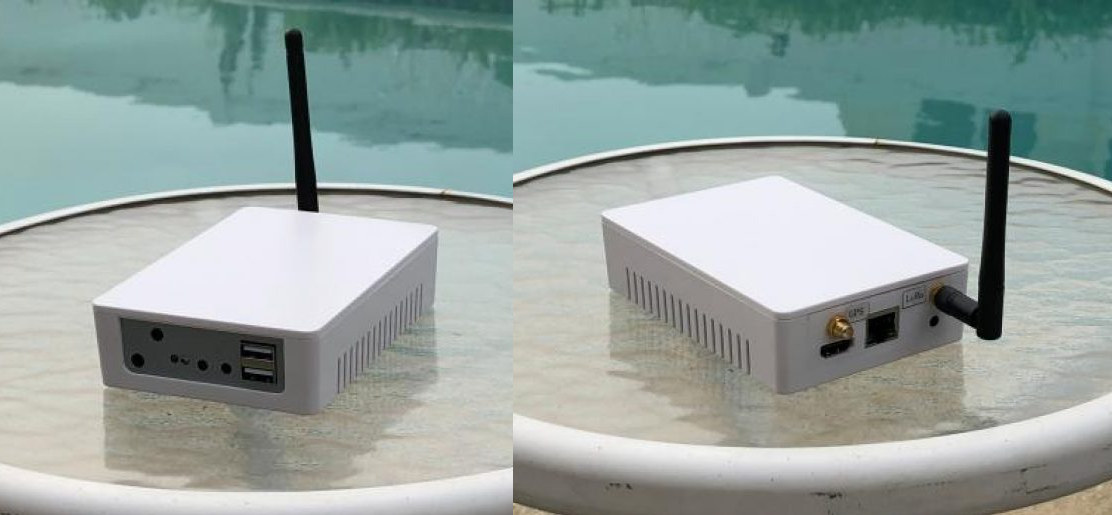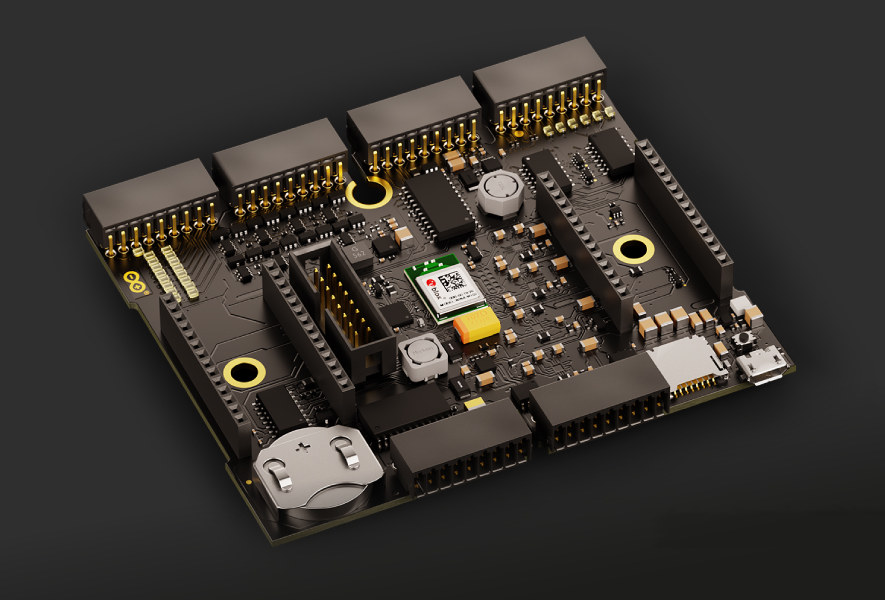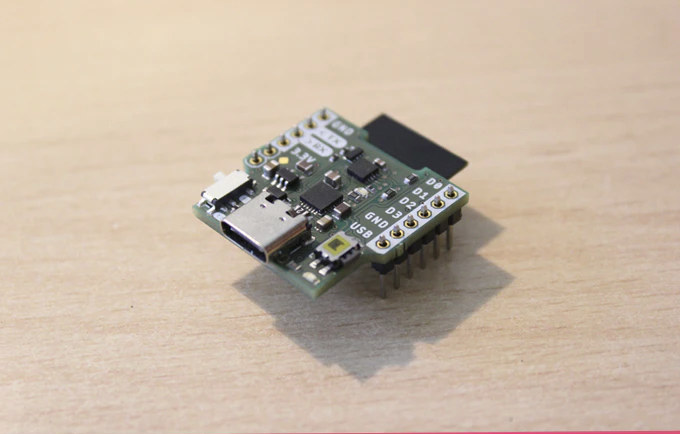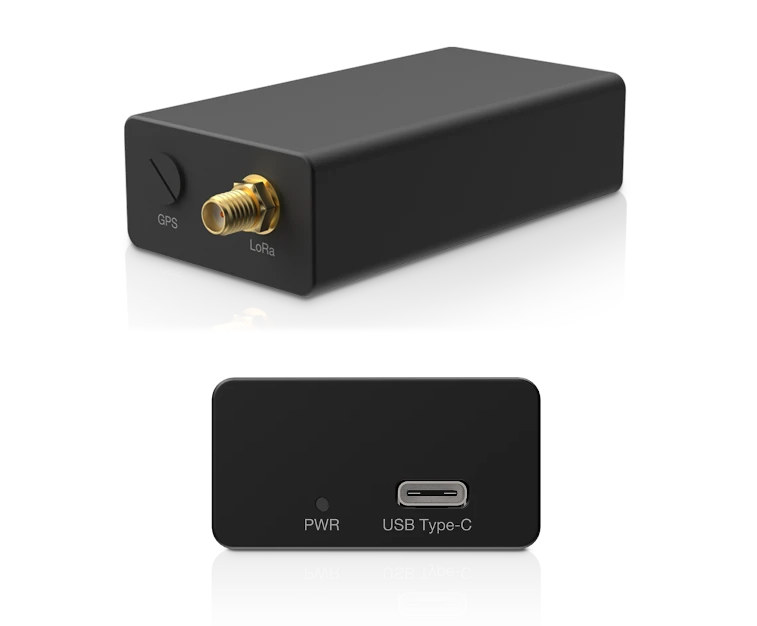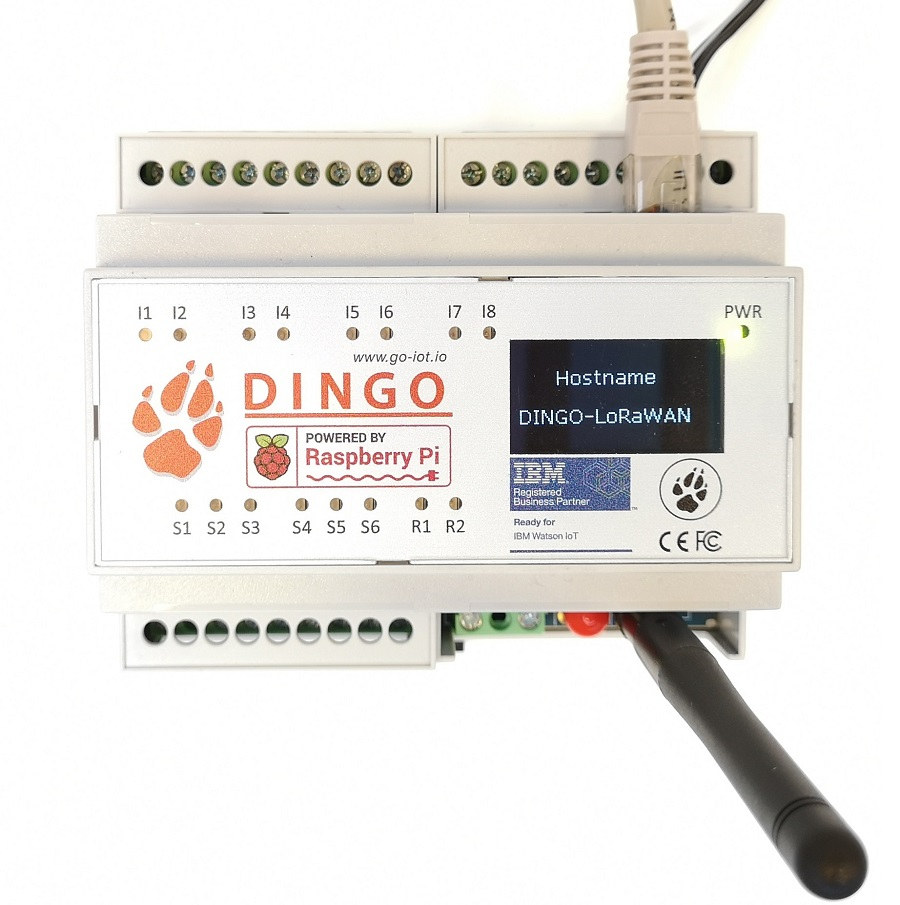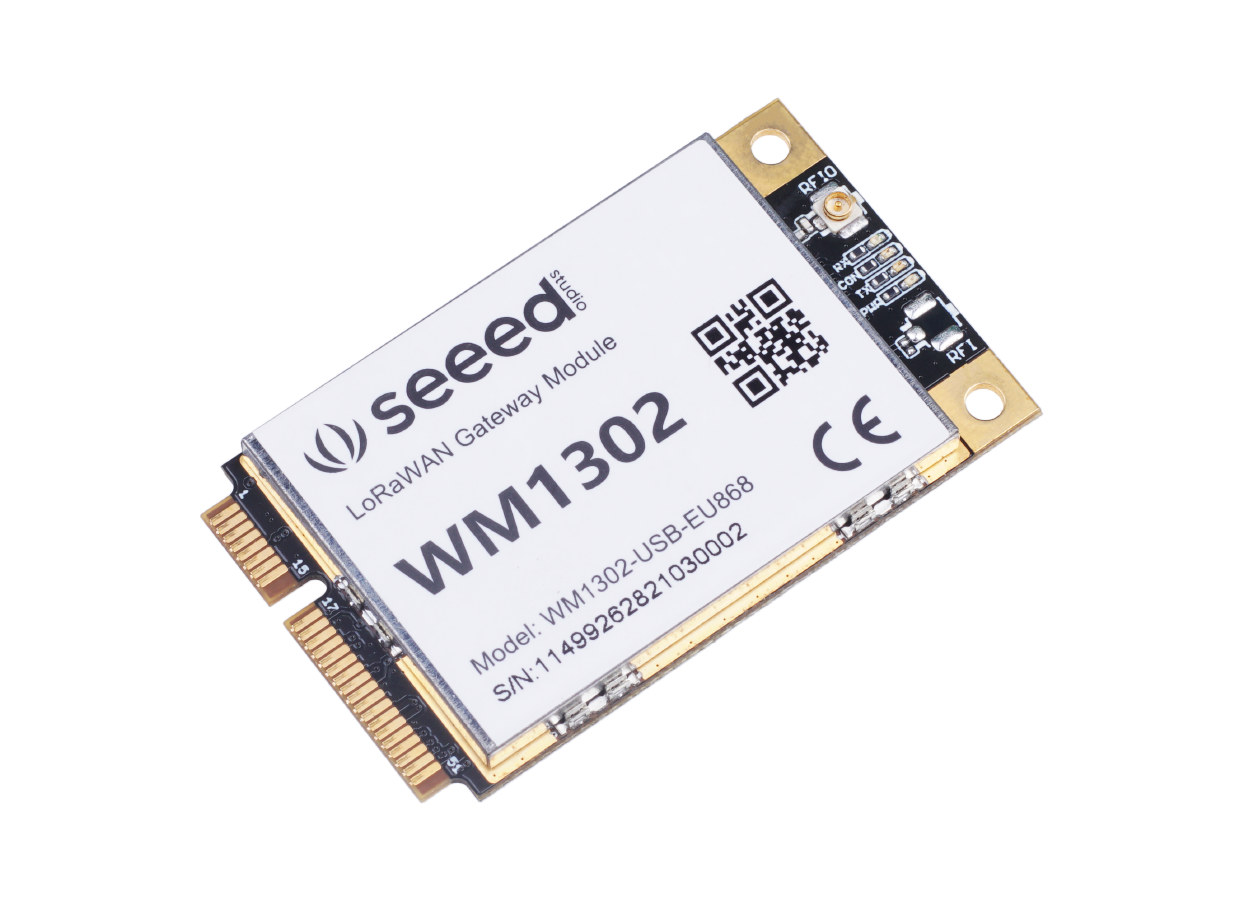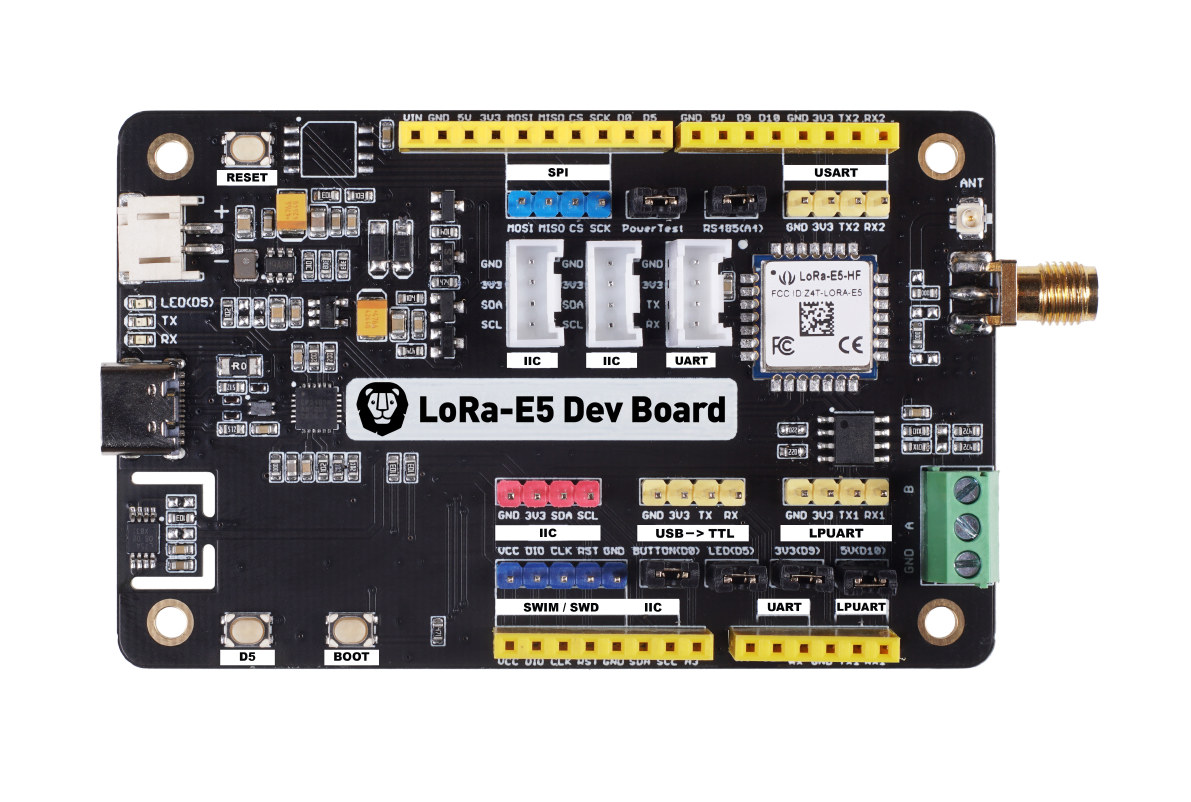I first noticed Semtech SX1303 LoRa baseband processor for gateways was in RAKwireless WisGate Developer Base equipped with RAK5146 SX1303 mPCIe LoRaWAN concentrator card. But n-Fuse now offers another option with their LRWCC3-MPCIE mini PCIe card that is an update to their earlier SX1302 based n-Fuse LRWCC2-MPCIE card announced last year. n-Fuse LRWCC3-MPCIE specifications are very similar with the differences highlighted in bold: MCU – STMicro STM32 LoRa Connectivity Semtech SX1303 digital baseband processor with 2xSX1250 and 1xSX1261 Tx/Rx front-ends Frequency Range – 863 to 870 MHz or 915 to 928 MHz Sensitivity 868 Mhz <= -125dBm at SF7, BW 125KHz <= -140dBm at SF12, BW 125kHz 915 Mhz <= -125dBm at SF7, BW 125KHz <= -140dBm at SF12, BW 125kHz Max RF Output Power – Up to +27dBm Listen Before Talk prevents collisions while accessing the spectrum. Fine Time Stamping enables Time Difference of Arrival (TDOA) network-based geolocation. u.FL […]
PineDio indoor LoRa gateway to combine Pine A64-LTS SBC with RAK2287 LoRaWAN concentrator module
RAKwireless has offered Raspberry Pi-based indoor LoRaWAN gateways for development/evaluation purposes for several years, including the more recent RAK7246 LoRaWAN developer gateway equipped with Raspberry Pi Zero W SBC. But there’s will soon be another option, also not directly from RAKwireless, as Pine64 PineDio indoor LoRa gateway will feature RAK2287 LoRaWAN concentrator module connected to Pine A64-LTS single board computer via a custom-designed adapter board. PineDio indoor LoRa gateway preliminary specifications: SoC – Allwinner A64 quad-core Arm Cortex A53 processor @ 1.0 GHz with Mali-400MP2 GPU System Memory – Up to 2GB LPDDR3 Storage – 128Mb SPI boot Flash, MicroSD card slot, optional eMMC flash module Video Output – HDMI 1.4 up to 4K resolution @ 30 Hz Connectivity Gigabit Ethernet Optional WiFi & Bluetooth module LoRaWAN via RAK2287 mini PCIe concentrator module based on Semtech SX1302 with support for RU864, IN865, EU868, AU915, US915, KR920, AS923; external antenna GNSS […]
Arduino unveils Edge Control board for smart agriculture
Arduino hardware and software have been used for smart agriculture applications for years, but Arduino has now launched a board part of its Arduino Pro program specifically designed for smart farming. Meet Arduino Edge Control. Powered by a Nordic Semi nRF52840 Bluetooth microcontroller, the board offers the usual digital & analog I/O’s, plus four 60/V2.5A solid-state relays, hydrostatic watermark sensor inputs, support for DC or solar power input, and can be augmented with one or two Arduino MKR boards for WiFi, 3G NB-IoT, or LoRaWAN connectivity. Arduino Edge Control specifications: MCU – Nordic Semi nRF52840 Arm Cortex-M4F microcontroller @ 64 MHz with 1MB flash, 256KB SRAM Additional storage – 2 MB QSPI flash memory, MicroSD card slot Connectivity Bluetooth LE Optional Wifi, 2G, 3G, NB-IoT, eMTC, and/or LoRaWAN via Arduino MKR board USB – Full-speed 12 Mbps micro USB port Expansion I/Os Digital Input – 6x edge-sensitive wake-up pins Digital […]
The Axon platform offers WiFi & LoRa IoT messaging in a compact form factor (Crowdfunding)
Qortex (Amine Mehdi Mansouri) has developed the WiFi & LoRa IoT messaging platform to allow devices to communicate wirelessly via serial messages. The solution also includes a wireless serial port and 4 digital outputs. The tiny Axon board is based on ESP8266 WiFi SoC and can be augmented with a LoRa module for a longer range, and the solution integrates with the Axon cloud for data visualization in the cloud. There’s also a HAT expansion board for Raspberry Pi compatibility. Axon board specifications: Wireless module – ESP12-S ESP8266 2.4 GHz WiFi 4 module USB – USB Type-C port for power and programming via CP2102 Expansion – 2x 6-pin header with GPIOs, UART, 5V, 3.3V, and GND Misc – Status LED, Reset button, USB/MCU (UART) selection switch Power Supply 5V input via USB-C port 3.3V/600mA LDO PTC fuse, reverse polarity protection, ESD protection Dimensions – 30 x 25 mm The board […]
Check LoRaWAN deployments on the go with WisGate Developer Base USB dongle
RAKWireless just had their “Big Tech Bloom” event services they announced many new LPWAN products ranging from WisDM fleet management system, OpenWrt based Wisgate OS, new industrial LoRaWAN gateways like WisGate Edge Lite 2, their first STM32WL module, as well as 9 new modules for WisBlock modular IoT platform with MIC, e-Paper display, GPS, an ESP32 based WisBlock core, etc… But today, I’ll have a look at the new $99 WisGate Developer Base, a USB dongle that connects to a laptop for LoRaWAN networks evaluation, for example, to check the coverage before installing a new gateway. Alternatively, it could also be used to add LoRaWAN gateway capability to existing embedded hardware like routers or industrial PCs. Two variants of the WisGate Developer Base are available – RAK7271 & RAK7371 – with the following specifications: Concentrator modules RAK7271 – RAK2287 SX1302 based mini PCIe concentrator module RAK7371 – RAK5146 SX1303 based […]
LoRaWAN BACnet gateway uses Raspberry Pi CM3+ for building automation
A few years about we wrote about BASpi I/O Raspberry Pi HAT compatible with BACNet, a data communication protocol for Building Automation and Control Networks, also known as the ISO 16484-6 standard, and used for HVACs, lightings, elevators, fire safety, and other systems found in buildings. But if you’d like a turnkey BACnet solution based on Raspberry Pi, UK-based Innovelec‘s DINGO LoRaWAN BACnet Advanced Gateway/Server may be easier to integrate into your building’s electrical installation and also offers low-power long-range LoRaWAN communication. DINGO-LORAWAN-GW_SVR-01 key features and specifications: System-on-Module – Raspberry Pi Compute Module 3+ with Broadcom BCM2837B0 quad-c ore Arm Cortex-A53 processor @ 1.2GHz, 1GB LPDDR2 RAM, 8GB eMMC Flash (16GB or 32 GB as option), RTC Info Display – 128×64 pixel OLED LCD Video Output – HDMI Networking 1x RJ45 10/100BaseT Ethernet 1x RJ45 10BaseT Ethernet LoRaWAN connectivity Support for LoRaWAN V1.0.2 and V1.0.3 Tx Power – Up to […]
WM1302 LoRaWAN gateway mini PCIe module works over SPI or USB
Announced in 2019, Semtech SX1302 LoRa transceiver is designed for cheaper, and more efficient LoRaWAN gateways, and we’ve seen it in mini PCIe concentrator cards such as nFuse SX1302 and Rak Wireless RAK2287 using USB or SPI host interfaces. Seeed Studio adds another option with WM1302 LoRaWAN gateway mPCIe module using either SPI or USB interfaces and supporting 868 or 915 MHz frequency bands. WM1302 module specifications: MCU – STMicro STM3L412 Arm Cortex-M4 microcontroller @ 80 MHz with 40KB RAM, 64 or 128KB flash LoRa Connectivity Semtech SX1302 LoRa Transceiver with 2x SX1250 Tx/Rx front-ends Tx power – Up to 26dBm @ 3.3V Rx sensitivity – Down to -139dBm @ SF12, BW 125 kHz; -125dBm @ 125K/SF7 LoRaWAN 1.0.2 compatible. LoRa band coverage – EU868, US915, AS923, AS920, AU915, KR920, and IN865. u.FL antenna connector Misc – Power, Config, and Tx/Rx LEDs Host Interface – SPI or USB interface on […]
STM32WL based LoRa-5E development kits go for $19.90 and up
The LoRa-E5 STM32WL module we covered last month can now be found in two LoRaWAN development kits from Seeed Studio with the ultra-compact LoRa-E5 mini board, and the Arduino UNO shaped LoRa-E5 board with more I/Os. Both boards support the LoRaWAN protocol with global frequencies and can achieve a transmission range of up to 10 km with ultra-low power consumption. LoRa-E5 and LoRa-E5 mini specifications: LoRa connectivity LoRa-E5 modules based on STM32WLE5JC SoC with Arm Cortex-M4 MCU @ 48 MHz with 256 KB flash memory, 64 KB SRAM, SX126x LoRa radio Modulations – LoRa, (G)FSK, (G)MSK, BPSK Operating frequencies – 868/915MHz (EU868, US915, AU915, AS923, KR920, IN865) Output power – up to +20.8 dBm at 3.3V Rx sensitivity – -116.5 dBm to -136 dBm Protocol – LoRaWAN SMA-K and IPEX antenna connectors USB – 1x USB Type-C port for power and programming I/Os LoRa-E5 mini – 2x 12-pin through-hole and […]


